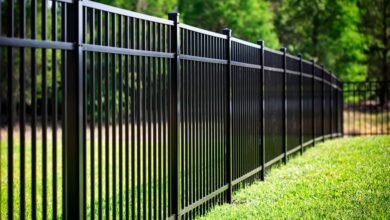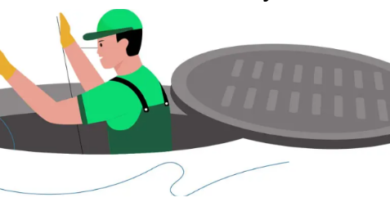Protect Your Fish with Regular Water Testing and Oase Products

The serene surface of a vibrant aquarium or pond may conceal hidden dangers beneath. Water quality plays a critical role in maintaining a healthy aquatic ecosystem, making regular testing indispensable to protect the life within your water features. While proper aeration, such as that provided by Oase Pond air pumps, helps maintain optimal oxygen levels, testing is the only way to detect harmful toxins that may be lurking unnoticed.
Trusted experts, like That Pond Guy, offer essential guidance for both novice and experienced pond hobbyists, emphasizing the importance of proactive water testing in preserving aquatic life.
What Is the Hidden Threat of Ammonia and Nitrite?
Fish excrete ammonia through their gills, which then accumulates as toxic waste in their water. Unlike vast natural bodies of water, the confined volume in aquariums and ponds tends to trap this ammonia. Left unchecked, ammonia levels can rise quickly, posing a severe threat to fish health.
To combat this, filtration systems combined with beneficial bacteria help regulate ammonia spikes in newly established aquariums and ponds. As bacteria break down ammonia, nitrite is formed as a byproduct, and both ammonia and nitrite must be kept at zero to ensure the well-being of your aquatic life. Regular water testing is the only sure method for monitoring these substances.
How Does the Nitrogen Cycle Relate to Water Testing?
The stability of your aquarium or pond water relies heavily on the nitrogen cycle—a natural process that converts ammonia into nitrite, then into nitrate. Testing plays a crucial role in tracking this cycle, particularly in newly set up systems. Using fluid test kits provides a higher level of accuracy than strips, helping you detect levels of ammonia, nitrite, nitrate, and pH more effectively.
In freshwater aquariums and ponds, these four tests are essential, but marine and reef systems demand additional checks for calcium, magnesium, and salinity levels.
How Often Should You Test Aquarium and Pond Water?
For newly set up aquariums, daily testing is necessary to ensure that ammonia and nitrite levels drop to zero, signaling the establishment of a stable biological filtration system. Once this happens and nitrate levels begin to rise, testing can be reduced to a weekly schedule.
For koi ponds, owners should regularly test the carbonate hardness (KH) to prevent pH imbalances. Furthermore, if your fish show signs of stress—such as erratic swimming, lethargy, or gasping for air—immediate water testing is crucial to address potential issues.
Beyond the Basics: Other Critical Water Parameters
While ammonia and nitrite levels are critical to monitor, other water parameters can significantly impact fish health:
- pH: This measures the acidity or alkalinity of the water. Rapid swings in pH can stress your fish and make them more susceptible to disease.
- KH & GH: Carbonate hardness (KH) helps stabilize pH levels, while general hardness (GH) affects the overall health of fish, especially in soft or hard water environments.
- Phosphate: High phosphate levels contribute to algae growth, which can overwhelm your pond or aquarium if not managed.
- Temperature: Fish species have specific temperature needs, and sudden changes can cause significant harm, especially in sensitive species.
Marine tanks also require additional checks, such as monitoring calcium, magnesium, and iodine levels, all of which are critical for coral health.
Testing Source Water Before It Is Too Late
Water from the tap often contains chlorine, chloramine, and other contaminants, which can be detrimental to your aquarium or pond system. It’s important to test your source water before adding it to your aquatic environment. If harmful substances are detected, consider using reverse osmosis (RO) water—a purified, contaminant-free option that can be remineralized to suit your fish’s specific needs.
Fixing Water Quality Emergencies
If testing reveals hazardous levels of ammonia or nitrite, immediate action is necessary:
- Perform a partial water change and add a water conditioner.
- Introduce beneficial bacteria to support the filtration process.
- Use chemical removers as a short-term solution to reduce toxin levels.
For ongoing algae issues or high phosphate levels, consider adjusting feeding practices and enhancing plant competition to help naturally balance nutrient levels.
The Lifesaving Habit Every Fish-Keeper Needs
Regular water testing is not just a precaution; it’s a lifesaving habit that prevents problems before they arise. Even clear water can harbor hidden dangers, which is why consistent testing is essential for a thriving aquatic ecosystem. For expert advice and quality products, rely on trusted sources like That Pond Guy to ensure your fish and pond systems stay healthy.
ChatGPT said:
Final Thoughts
In conclusion, ensuring the health and longevity of your aquatic ecosystem requires careful attention to water quality. Oase products, such as their advanced pond air pumps, play a vital role in maintaining optimal oxygen levels, which are essential for the well-being of both fish and plants. Regular water testing, combined with the use of Oase filtration systems, helps prevent toxic build-ups of ammonia and nitrite, safeguarding your pond or aquarium from hidden dangers.
By incorporating Oase into your pond care routine, you’re taking a proactive approach to maintaining a thriving aquatic environment. Whether you’re a novice hobbyist or an experienced pond keeper, Oase offers the tools and expertise to help you create a healthy, balanced system for your fish to flourish.
Regular water testing, alongside reliable Oase products, ensures that your aquatic life remains healthy and vibrant for years to come.
Clearing Up Confusion
Q: How often should I test my aquarium water?
A: Test daily for new aquariums until ammonia and nitrite levels stabilize at zero. Then, shift to weekly testing. Fish stress signs demand immediate testing.
Q: Can Oase Pond air pumps help with water quality?
A: Yes! Oase Pond air pumps are instrumental in maintaining oxygen levels, which helps support a healthy ecosystem by reducing the risk of ammonia and nitrite toxicity.
Q: Do I need to test source water?
A: Absolutely! Water from your tap can contain chlorine or other harmful substances, so always test it before introducing it into your aquarium or pond system.




